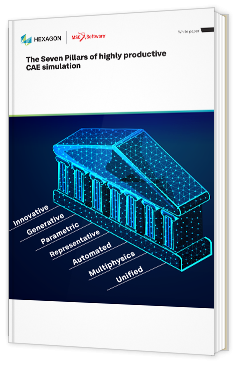

Les sept piliers d'une simulation CAE hautement productive.

"The Computer-Aided Engineering (CAE) simulation industry is already over 50 years old and one of the ‘Holy Grails’ that still hasn’t been achieved is to tightly couple the design and CAE representations of the product under development so that changes to the design are immediately included in the CAE analysis, and changes driven by the analysis are immediately incorporated into the design. Some have tried to solve the problem through embedding CAE capabilities inside CAD (Computer-Aided Design) software(1, 2) but that has typically involved compromises in accuracy and functionality or resulted in a compromise in the CAE user’s experience within the design environment that has evolved to cater for the need of the CAD user.
Introduction – Transforming the traditional CAE simulation process
There has always been a gulf between the Mechanical CAD world and the CAE world over the provision and usability of CAE simulation tools that can work directly with CAD geometries, especially when considering the needs of industrial manufacturing requirements- accurate, repeatable, reliable simulations - within industrially relevant timescales for product research, development, production, manufacturing and deployment.
Either CAE has been used by highly educated (usually scarce, and highly paid) Analysts, or it has been only been used for limited applications within CAD software by Design Engineers working to tight product design, development and release schedules (3). Although solution times within many CAE disciplines have become ever shorter over the years thanks to advances in high performance computing (HPC)(1), it remains true that the majority of time within a simulation workflow, typically more than 66%, is spent cleaning geometry, creating meshes, debugging and validating the simulation models. It leaves precious little time for engineers to review the response of the structures and mechanisms, understand their behavior and identify potential design improvements that could improve the product performance. Too many product development processes fail to produce optimum designs because the traditional CAE simulation process takes too long to complete. This causes companies to use simulation primarily for stress checking and not to identify optimum, or even just better designs."